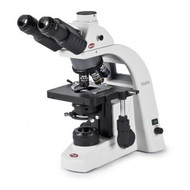Scientific research often involves studying specimens that are invisible
to the naked eye, which is why a quality microscope is an essential part of your lab equipment and supplies. How do you
determine which style is best suited for your needs?
Tips for Selecting a Microscope for a Research Lab
A traditional upright microscope works well for
fixed samples, while an inverted microscope provides more room for the large
vessels used with living cells and tissue. Two-dimensional view is adequate for many
samples, but if you require 3D images, choose a microscope with a motorized
objective revolver that guides the sample through the necessary views. Cells often need manipulation to gain the proper
amount of contrast for detailed visibility. Special objectives, prisms and
filter cubes are among the different methods used to control the amount of
light passing through a sample. In turn, the chosen contrast method will dictate
the appropriate light source, whether it's halogen, LED or mercury metal halide
lamps. Budget is always a consideration when purchasing
lab equipment and supplies. A modular system gives you the flexibility to
accommodate your current needs with the capability to upgrade in the future. Whether you're looking for a compound, inverted or stereo microscope, Stellar Scientific has top-quality
products at cost-effective prices. We also offer a number of staging, lighting
and objective options so your microscope can be customized to fit your
requirements.

